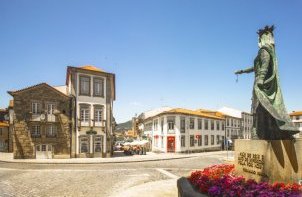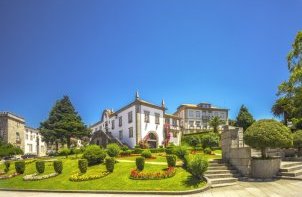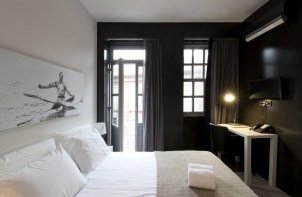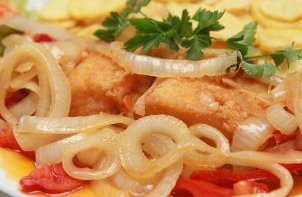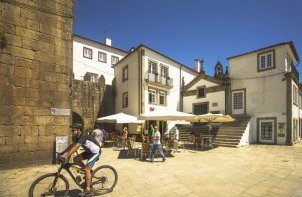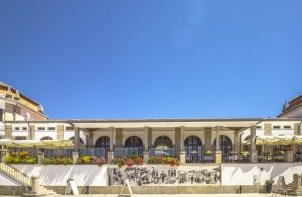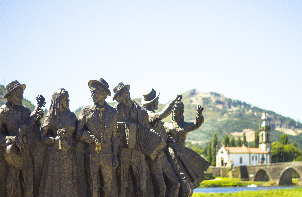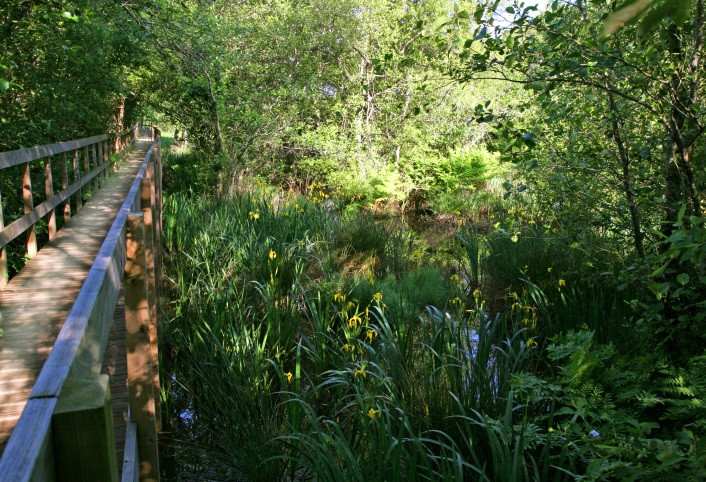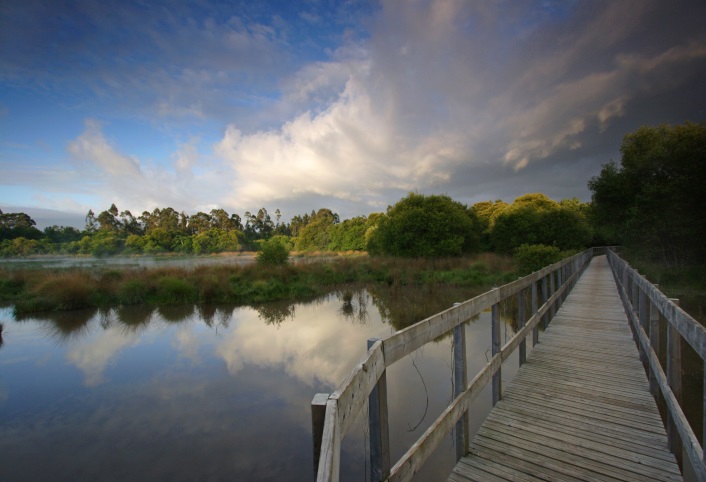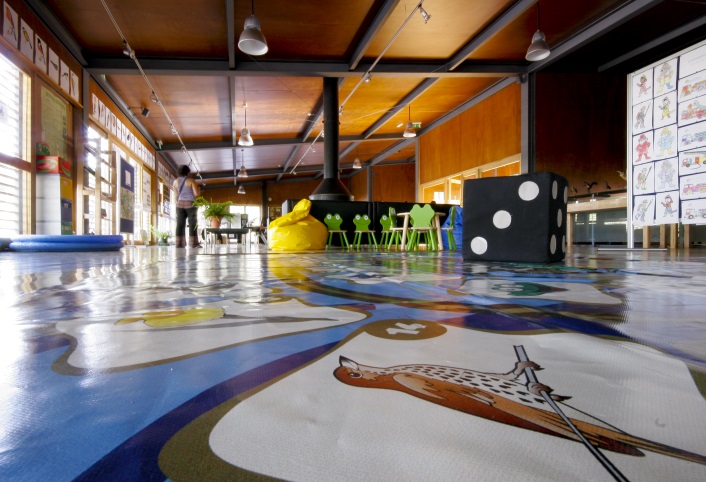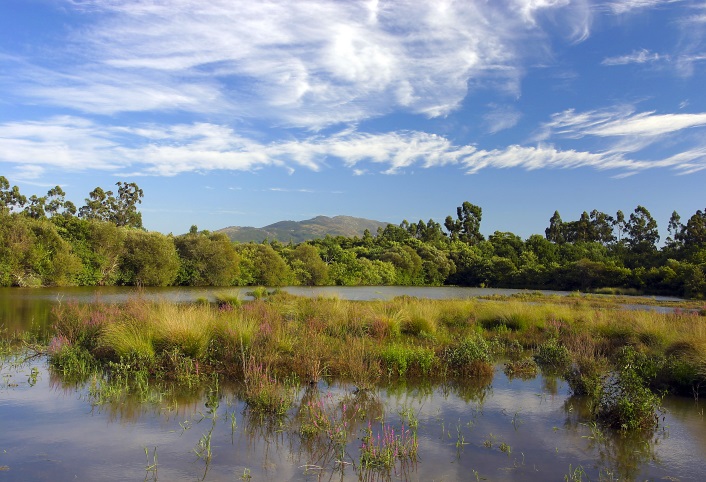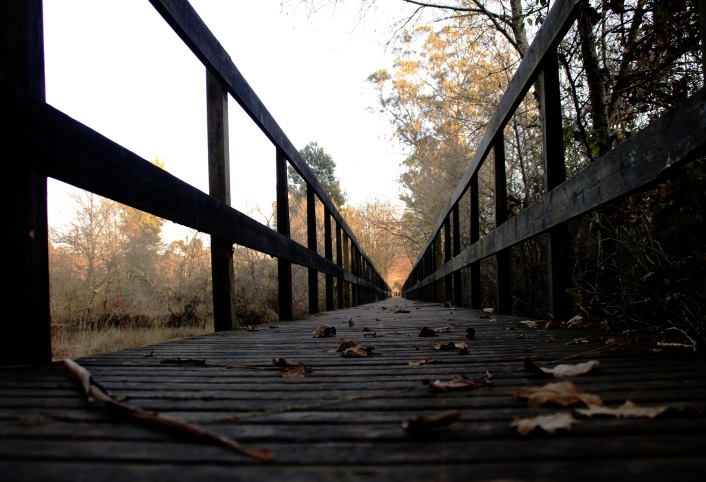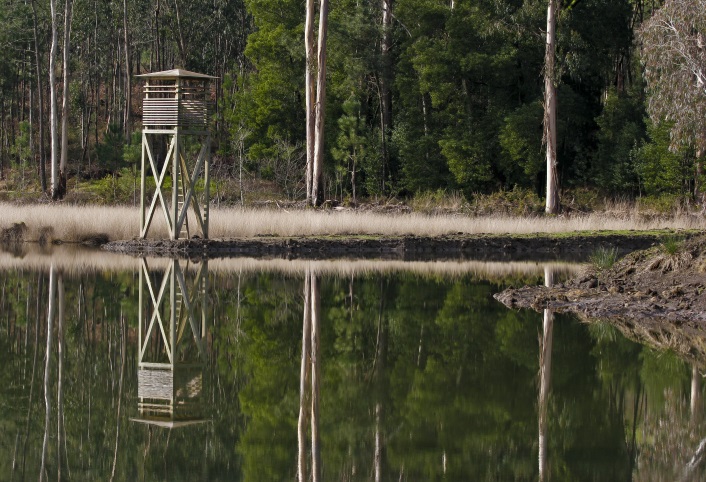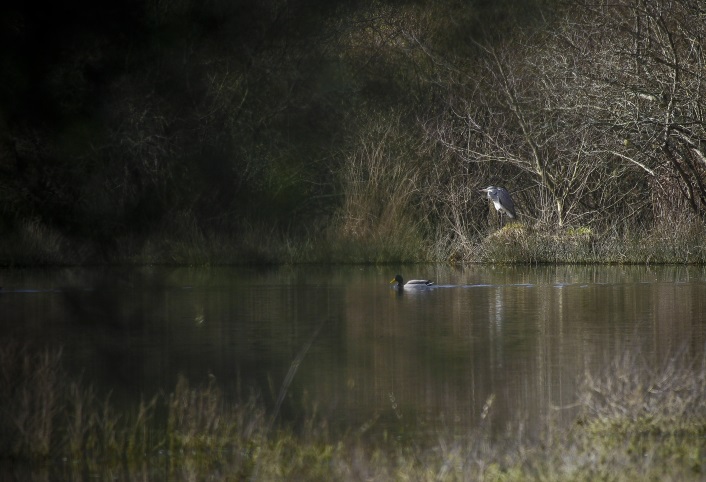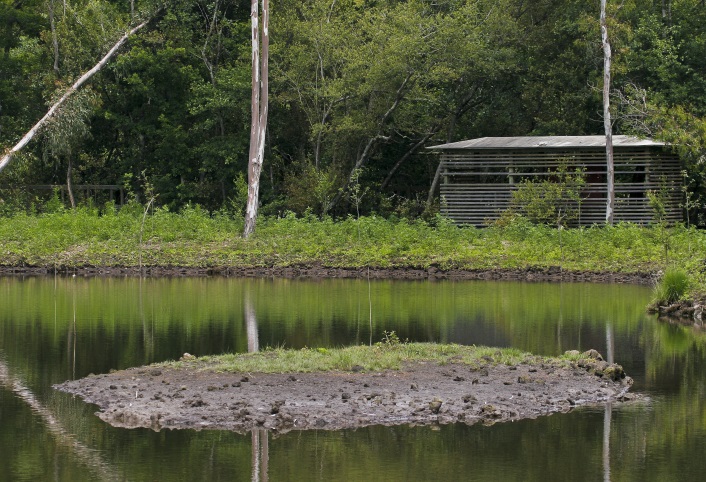Lagoon Route
Rua da Lagoa n.º 476, S. Pedro d'Arcos 4990-530 Ponte de Lima
41º 45' 52,3'' N | 8º 38' 34,6" W
Rua da Lagoa n.º 476, S. Pedro d'Arcos 4990-530 Ponte de Lima
Description
The Lagoa Trail is a pedestrian route called a small route. The respective markings and signs comply with international standards. The route takes place in the Protected Area of the Bertiandos and S. Pedro d'Arcos Lagoons, allowing to enjoy the unique landscape of the lagoon of S. Pedro d'Arcos, as well as interpret its natural values.
We left the Environmental Interpretation Center in the direction of the lagoon, namely the wooden walkway, an elevated structure that allows us to cross the northern and eastern limits of this rare biotope that was the origin of the classification of the Protected Area as a Wetland of International Importance. The Wetlands, the most productive ecosystems of the biosphere, are fundamental in maintaining global biodiversity, while providing various environmental services.
The extension to be covered is dominated, in the west, by a forest space of production and, to this one, by the arboreal vegetation that forms a strip of protection to the lagoon. After the slight descent it is possible to identify, on the left, a small bog where the drósera occurs, an insectivorous plant.
At the bridge, we proceed to the first of two observation stations. A few meters from here, there is the water line that, in summer, supplies the lagoon with water from the Estorãos irrigation system.
The Observation posts are prime locations for the observation of aquatic avifauna species, ecologically dependent on wetlands, such as the heron, the mallard duck, the water hen, among many others of assiduous presence throughout the year. The otter and visão are the mammals that mostly use the space. From this place can also be verified the diversity of spaces that make up the lagoon, such as water mirrors, strips of tree vegetation and spots of emerging shrub vegetation.
Continuing, we arrived at the bifurcation that would allow us to follow other pedestrian routes. On the opposite side of the lagoon are the natural pastures, which are subject to extensive periods of waterlogging and, being hedged by hedges, with oak, alder and willow trees, form a landscape of the "Bocage" type, which is only found at the national level, in the Aveiro region, and these pastures were decisive in the local livestock activity.
Before leaving the bridge, we find the second observation post, which gives a wider view of the lagoon. We continue to be able to observe the avifauna, which tends to concentrate, in the fall / winter, in the mirror of water, looking for the security of the arboreal vegetation of the interior of the wet zone. In the spring / summer, the water lilies emerge which, when they bloom, create a magnificent scenery. In this period, species of reeds and other shrubs (eg willow), which are of great importance to bird, amphibian and arthropod species, provide shelter, feeding and nesting conditions.
Following the indications of the route, we arrive at the southern part of the lagoon, and we turn right by a parallel road, denominated state ditch, artificial water line constructed, fortunately, without the desired success, for the effects of drainage of the lagoon. We passed the ditch, through a wooden bridge and a few meters ahed, we glimpse the Environmental Interpretation Center.
We left the Environmental Interpretation Center in the direction of the lagoon, namely the wooden walkway, an elevated structure that allows us to cross the northern and eastern limits of this rare biotope that was the origin of the classification of the Protected Area as a Wetland of International Importance. The Wetlands, the most productive ecosystems of the biosphere, are fundamental in maintaining global biodiversity, while providing various environmental services.
The extension to be covered is dominated, in the west, by a forest space of production and, to this one, by the arboreal vegetation that forms a strip of protection to the lagoon. After the slight descent it is possible to identify, on the left, a small bog where the drósera occurs, an insectivorous plant.
At the bridge, we proceed to the first of two observation stations. A few meters from here, there is the water line that, in summer, supplies the lagoon with water from the Estorãos irrigation system.
The Observation posts are prime locations for the observation of aquatic avifauna species, ecologically dependent on wetlands, such as the heron, the mallard duck, the water hen, among many others of assiduous presence throughout the year. The otter and visão are the mammals that mostly use the space. From this place can also be verified the diversity of spaces that make up the lagoon, such as water mirrors, strips of tree vegetation and spots of emerging shrub vegetation.
Continuing, we arrived at the bifurcation that would allow us to follow other pedestrian routes. On the opposite side of the lagoon are the natural pastures, which are subject to extensive periods of waterlogging and, being hedged by hedges, with oak, alder and willow trees, form a landscape of the "Bocage" type, which is only found at the national level, in the Aveiro region, and these pastures were decisive in the local livestock activity.
Before leaving the bridge, we find the second observation post, which gives a wider view of the lagoon. We continue to be able to observe the avifauna, which tends to concentrate, in the fall / winter, in the mirror of water, looking for the security of the arboreal vegetation of the interior of the wet zone. In the spring / summer, the water lilies emerge which, when they bloom, create a magnificent scenery. In this period, species of reeds and other shrubs (eg willow), which are of great importance to bird, amphibian and arthropod species, provide shelter, feeding and nesting conditions.
Following the indications of the route, we arrive at the southern part of the lagoon, and we turn right by a parallel road, denominated state ditch, artificial water line constructed, fortunately, without the desired success, for the effects of drainage of the lagoon. We passed the ditch, through a wooden bridge and a few meters ahed, we glimpse the Environmental Interpretation Center.
Download the file:


